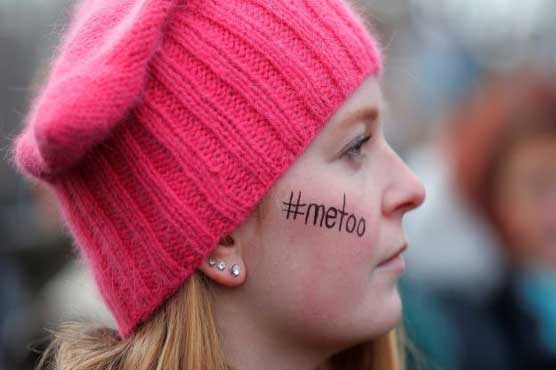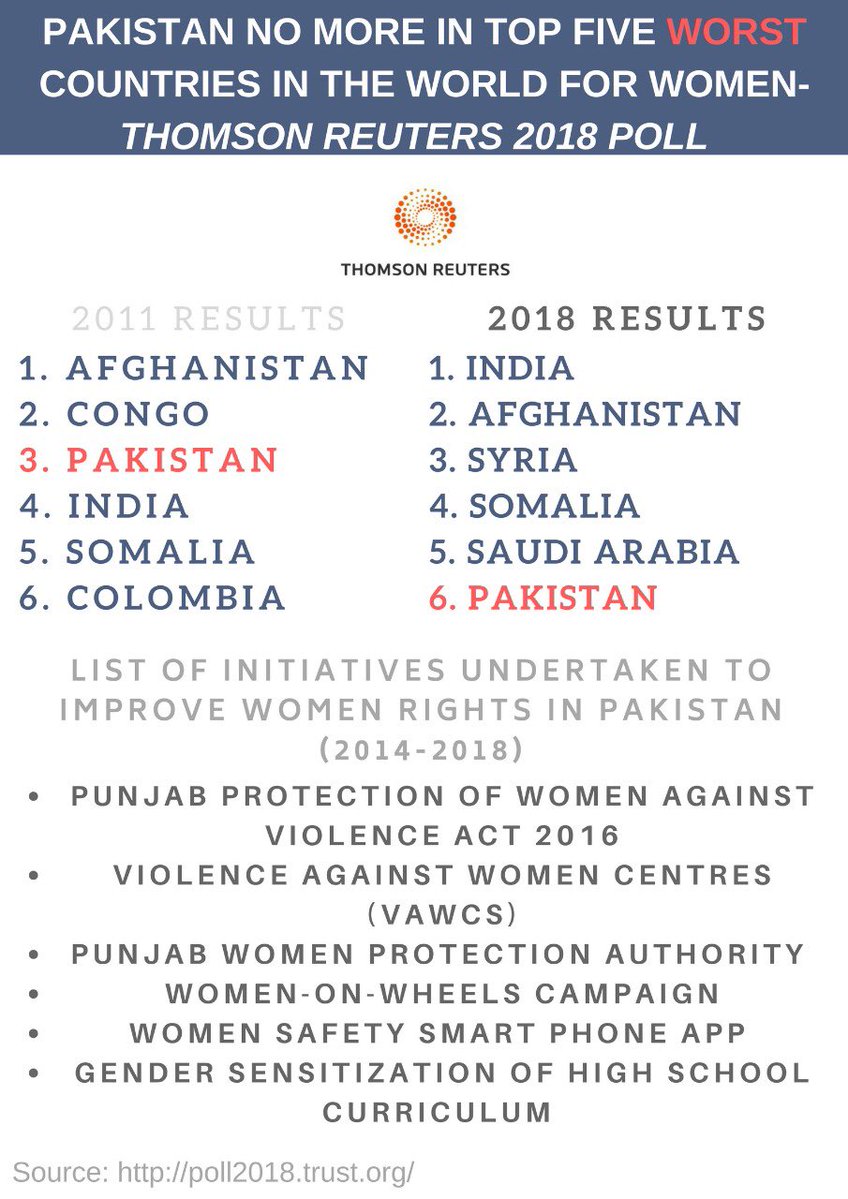India, Pakistan, US among Top 10 dangerous countries for women amid #MeToo campaign

Pakistan came sixth, an improvement experts credited to more women in public office.
(WebDesk/Reuters) - Seven years ago a Thomson Reuters Foundation experts survey found the five most dangerous countries for women were seen to be Afghanistan, Democratic Republic of Congo, Pakistan, India, and Somalia. This year we set out to see if the situation had changed. We wanted to find out whether more was being done to address the overall risks faced by women, and specifically regarding healthcare, access to economic resources, customary practices, sexual violence, non-sexual violence and human trafficking. We expanded our poll to the 10 most dangerous countries with some surprising results.The Thomson Reuters Foundation survey asked about 550 experts in women’s issues which of the 193 United Nations member states they considered most dangerous on a range of issues, with India topping the list followed by Afghanistan and Syria.
INDIA, The most dangerous country for women with sexual violence
Experts said India moving to the top of poll showed not enough was being done to tackle the danger women faced, more than five years after the rape and murder of a student on a bus in Delhi made violence against women a national priority.
“India has shown utter disregard and disrespect for women ... rape, marital rapes, sexual assault and harassment, female infanticide has gone unabated,” said Manjunath Gangadhara, an official at the Karnataka state government.
“The (world’s) fastest growing economy and leader in space and technology is shamed for violence committed against women.”
Government data shows reported cases of crime against women rose by 83 percent between 2007 and 2016, when there were four cases of rape reported every hour.
The survey asked respondents which five of the 193 United Nations member states they thought were most dangerous for women and which country was worst in terms of healthcare, economic resources, cultural or traditional practices, sexual violence and harassment, non-sexual violence and human trafficking.
Respondents also ranked India the most dangerous country for women in terms of human trafficking, including sex slavery and domestic servitude, and for customary practices such as forced marriage, stoning and female infanticide.
India’s Ministry of Women and Child Development declined to comment on the survey results.
.jpg)
Photo: Reuters
The United States came 10th overall, but ranked joint third with Syria when respondents were asked where women most risked sexual violence, harassment and coercion into sex, and sixth regarding non-sexual violence such as domestic and mental abuse.
Experts, advocates and survivors said a rising awareness of assault against women pegged to the #Metoo movement, the country’s outsized role on the world stage and a tolerance of violence added to the perception of danger in the United States.
“I can understand why people would perceive us as being a country that is dangerous for women because we kind of are,” Abby Honold, a sexual assault survivor and activist in Minneapolis, told the Thomson Reuters Foundation.
Honold has been promoting legislation before the U.S. Congress that would train police in improved ways to question sexual assault victims.
“We try to sell that we are a country of freedom and also of safety, but there are a lot of people in our country that are not safe, and victims of sex assault and domestic violence are certainly in that group,” she said.
The #MeToo campaign against sexual harassment went viral last October, with Hollywood producer Harvey Weinstein accused of sexual misconduct by more than 70 women dating back decades.
Weinstein this month pleaded not guilty to charges of rape and sexual assault.

Photo: Reuters
#METOO
Hundreds of women have now publicly accused powerful men in business, government and entertainment of sexual misconduct, and thousands joined the #MeToo social media movement to share stories of sexual harassment or abuse.
“There now is a platform and national conversation, and more women and girls feel safe talking about the harassment and violence they’ve been subjected to,” said Jennifer Becker, senior staff attorney at Legal Momentum, a U.S.-based non-profit that works on legal rights for women.
“The United States has visibility. That conversation is being viewed around the world.”
Cindy Southworth, executive vice president at the National Network to End Domestic Violence, said media coverage of the United States had built an image of violence against women, but questioned its accuracy.
“People watch the U.S.,” she said. “They watch our elections. They watch our media coverage. They watch our celebrity violence against women cases.
“The perception is understandable, but not based on reality.”
Other countries are much more dangerous for women who face conflict and practices such as female genital mutilation or child marriage, according to the United Nations.
Rates of femicide are more extreme in Latin America, and 49 countries have no laws to protect women from domestic violence, according to UN Women.
But U.S. statistics can paint a grim picture.
Almost one in five women have been raped, and more than one in three experienced rape, violence or stalking by an intimate partner, according to 2010 statistics by the U.S. Centers for Disease Control and Prevention.
The Thomson Reuters Foundation’s poll involving 548 respondents was a repeat of a similar survey in 2011 that found Afghanistan, Democratic Republic of Congo, Pakistan, India, and Somalia were seen as the most dangerous countries for women.
Pakistan
This time Pakistan came sixth, an improvement experts credited to more women in public office, an active civil society and tougher action against sexual violence.

Source: Twitter @smucmo

